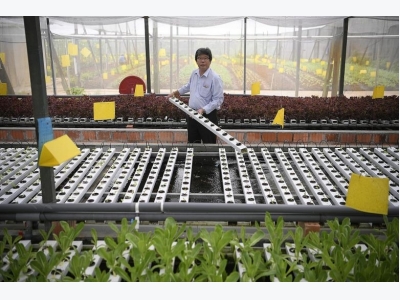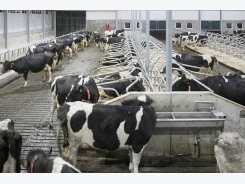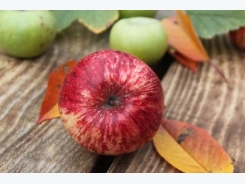A vegetable, fish farming system that is truly green

Mr Joseph Phua, who runs Orchidville farm in Sungei Tengah, uses an aquaponic system to rear fish and grow vegetables. He serves the produce and fish at a restaurant just beside his vegetable farms. ST PHOTOS: MARK CHEONG
For a year, 63-year-old Joseph Phua toiled to create his own hybrid aquaponic farm from scratch, veteran farmer constructs his own hybrid aquaponic system that cuts waste and saves space
His back bent, he would construct his own concrete fish tanks and cut holes in rectangular wire casings to hold his vegetable seedlings.
Even the piping to circulate water in the system, which combines conventional aquaculture with hydroponics (the cultivation of plants in water) in a symbiotic environment, he set up himself.
"I'm a farmer; we farmers like to do things ourselves," he told The Straits Times from his farm, Orchidville, in Sungei Tengah, off Old Choa Chu Kang Road.
Initially, he wanted to set up a hydroponic farm to grow lettuce but the weather here was far too hot.
He then hatched a solution: a closed-loop system, where vegetable grow trays are stacked above fish tanks to bring about a cooling effect.
Water used for the fish would be piped to a filter to remove solid waste, and then pumped back into the system to water the vegetables.
Initially, he wanted to set up a hydroponic farm to grow lettuce but the weather here was far too hot. He then hatched a solution: a closed-loop system, where vegetable grow trays are stacked above fish tanks to bring about a cooling effect. Water used for the fish would be piped to a filter to remove solid waste, and then pumped back into the system to water the vegetables.
Getting ideas from the Internet, he started on the arduous journey - one speckled with successes, but not the ones he had hoped for.
While altering the hydroponic system into an aquaponic system, he also set up several soil-based farms housed in greenhouses which would quickly grow to produce hundreds of kilograms of vegetables like kailan, chye sim and Chinese spinach a day.
But his aquaponic farm took longer to take off. Mr Phua reckons that he had to throw away 20 to 30 batches of vegetables as he fine-tuned the system.
"They would grow for a bit, then their leaves turned soft," he said. This was mainly due to the ambient temperature being too warm.
It was also tricky getting the water conditions right.
"You had to get the pH (acidity) of the water right for both the fish and the vegetables. The amount of nutrients in the water that goes to the plants also has to be enough," he said.
He used vinegar to lower the pH and baking powder to increase it.
And his efforts have paid off.

Mr Phua constructed the hybrid system himself, stacking vegetable trays above fish tanks to bring about a cooling effect.ST PHOTOS: MARK CHEONG
Today, Mr Phua's 600 sq m aquaponic system - nearly the size of six five-room Housing Board flats - can grow 8,000 rosa and romaine lettuce heads and rear 8,000 fish - tilapia, jade perch and sea bass - at any one time.
He serves the vegetables, along with those grown at his soil-based farms, and the fish, at a zi char restaurant that he operates just beside his vegetable farms.
"All the vegetables we serve are harvested on the same day," said Mr Phua proudly.
The rest of the vegetables are sold to customers on weekends.
Retired civil servant Goh Shih Yong, 68, a regular customer at the restaurant, said: "The vegetables come straight from the farm, where they are harvested and immediately cooked for the guest. You can taste the freshness and juiciness. It's different from those you buy from the market."
Coming from a farming family, Mr Phua, a grandfather of two, has been in the trade since he was just six years old, starting with simple tasks like feeding the chickens and pigs at his parents' farm.
Over more than 50 years, he has tried his hand at rearing ducks and lambs, growing papayas and, just before joining the vegetable farming trade, cultivating orchids for 17 years in Mandai.
But when he moved from Mandai to Sungei Tengah five years ago, his farm land shrank from some 43ha to just 3.3ha.
Mr Phua realised that he needed to be able to do more with less. So, hearing that the Government was pushing for consumers and businesses to buy more local produce, he applied for a permit from the Agri-Food and Veterinary Authority of Singapore, which he received last year.
Mr Phua's aquaponic system has been set up at a time when the Government is pushing for farms in land-scarce Singapore to be more productive.
He believes it is one of a kind as it was constructed completely by his own hands.
"It is actually a hybrid. Most aquaponic systems have the tanks and vegetable racks separated. Mine is stacked," he said. He aims to set up two more of these space-saving aquaponic systems in his farm next year.
He added that the system mainly uses rainwater and that 90 per cent of the water used is recycled. Just 10 per cent is lost to evaporation. Leaves that turn yellow are fed to the fish.
He aims to eventually launch his own brand of vegetables, Day-1 Farm Fresh Vegetables, which he hopes to sell at supermarkets.
"We want to sell premium vegetables at affordable prices," he said.
These days, tending to the aquaponic farm has become much more relaxing.
He needs to feed the fish only once or twice a day, and to do checks on the system.
But despite his success, he said he cannot bear to eat the fish he rears.
"They trust me - I feel guilty when I eat them," he said.
A version of this article appeared in the print edition of The Straits Times on November 10, 2017, with the headline 'A vegetable, fish farming system that is truly green'.
Có thể bạn quan tâm
Phần mềm

Phối trộn thức ăn chăn nuôi

Pha dung dịch thủy canh

Định mức cho tôm ăn

Phối trộn phân bón NPK

Xác định tỷ lệ tôm sống

Chuyển đổi đơn vị phân bón

Xác định công suất sục khí

Chuyển đổi đơn vị tôm

Tính diện tích nhà kính

Tính thể tích ao hồ



 ‘Start-up nation’ meets Shavuot: the story of Israel’s…
‘Start-up nation’ meets Shavuot: the story of Israel’s…  Top 5 tech innovations in agriculture
Top 5 tech innovations in agriculture